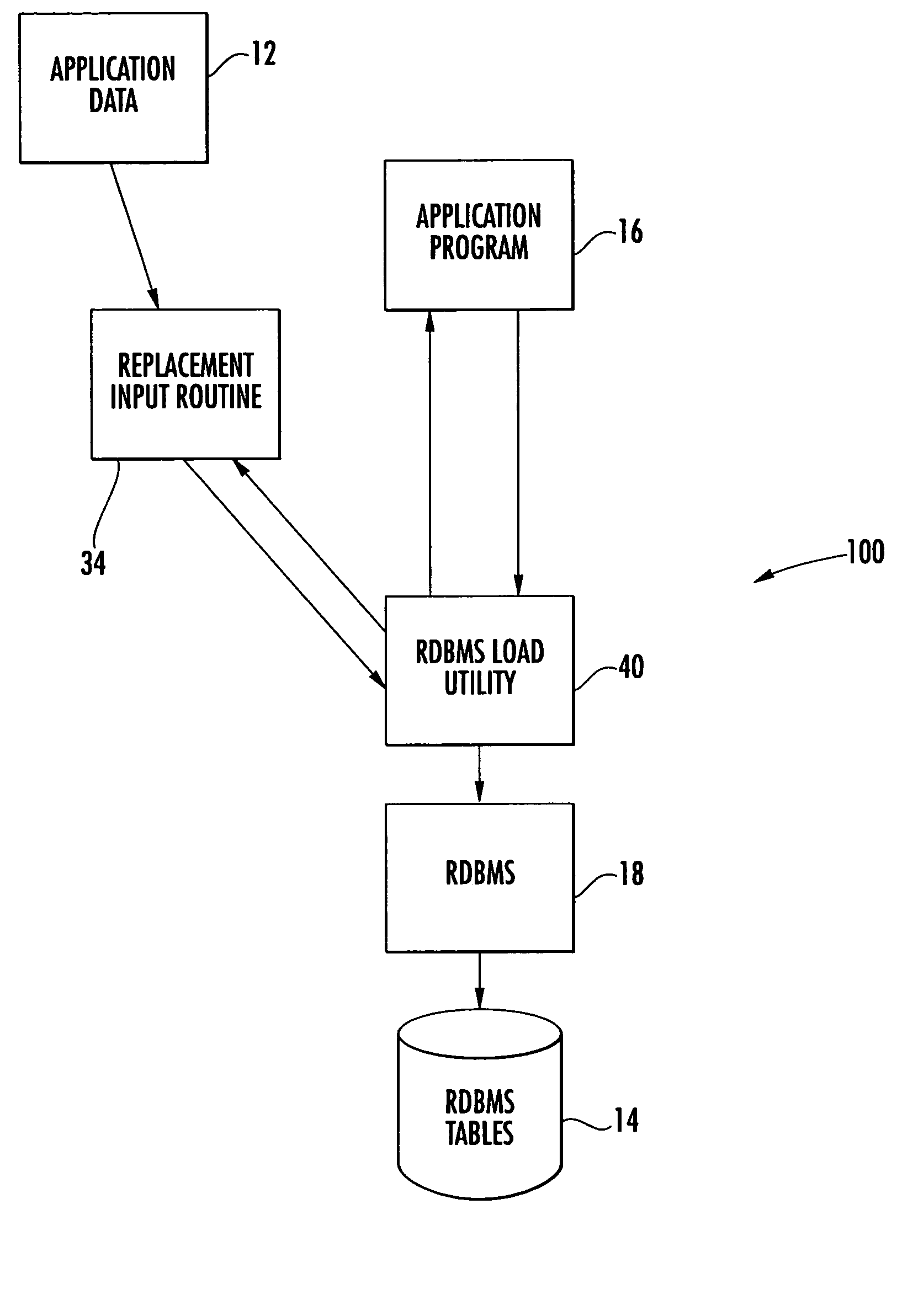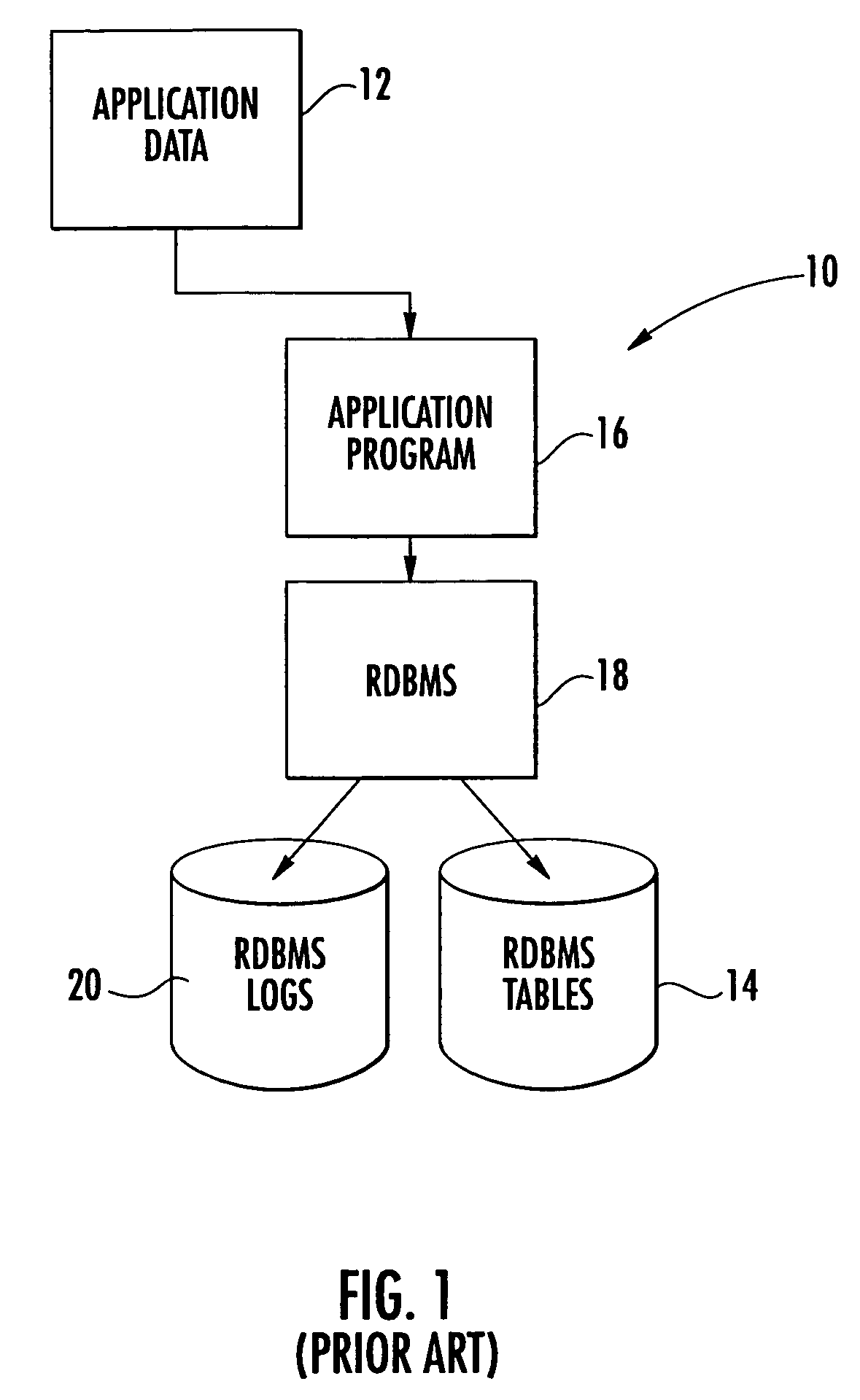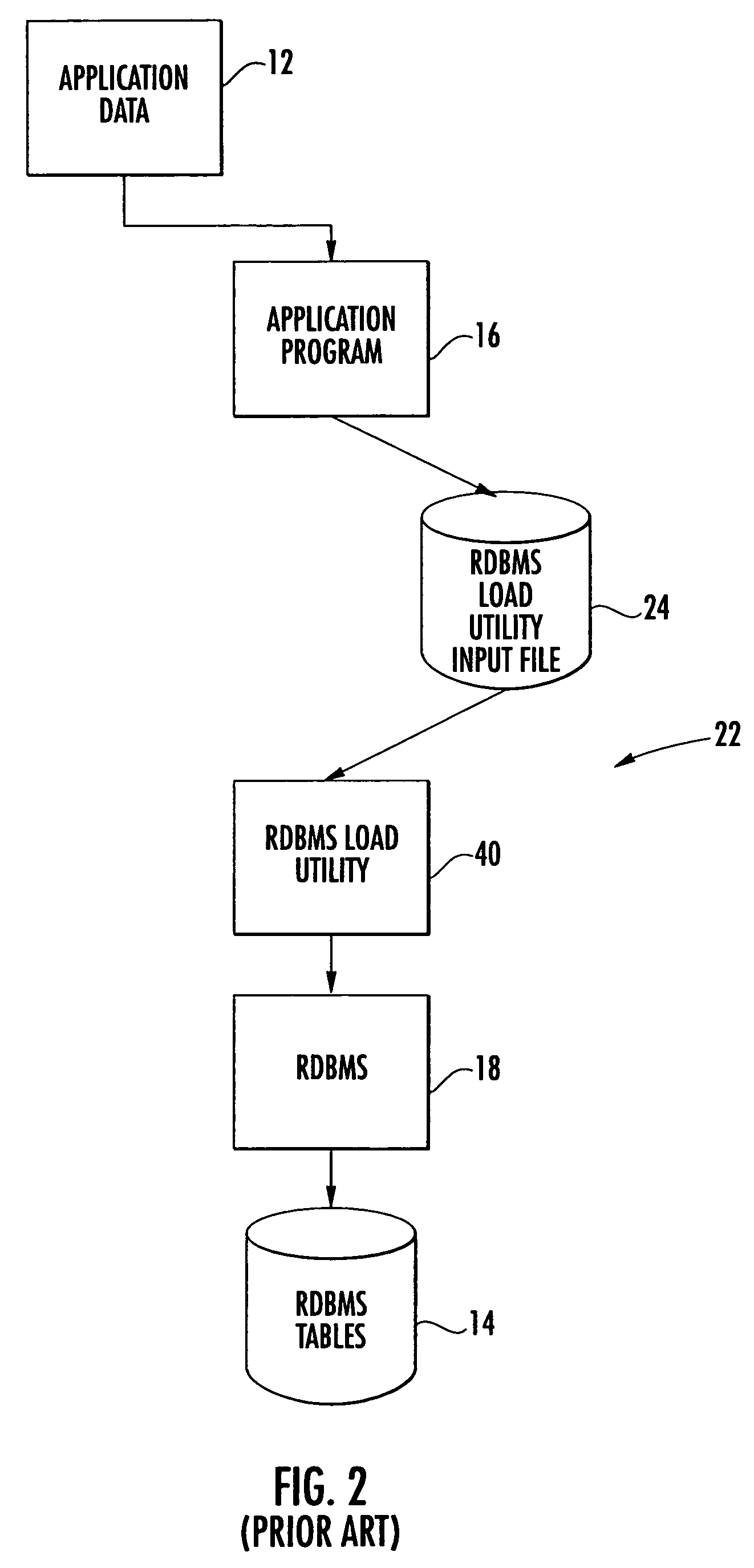Low-latency method to replace SQL insert for bulk data transfer to relational database
a relational database and database technology, applied in the field of relational database management system, can solve the problems of reducing the number of resources, incurring further overhead, and increasing the overhead of sql insert statements, so as to reduce the elapsed time and cpu time, and minimize the effect of resources
- Summary
- Abstract
- Description
- Claims
- Application Information
AI Technical Summary
Benefits of technology
Problems solved by technology
Method used
Image
Examples
Embodiment Construction
[0028]The present invention generally provides for the use of a coordinating program, generally shown as 160 in FIG. 9, to intercept calls from a load utility so that application data is loaded into the database directly from a computer's main memory rather than from external media which is typically the source of input files for a load utility.
[0029]As stated above, there are two generally known methods for loading data into a database. First, the use of RDBMS SQL “INSERT” calls are commonly used for the purpose of loading tables. As seen in FIG. 1, a flowchart of the process of executing an SQL statement is generally shown as 10. An SQL INSERT statement transfers one row of application data 12 into a database table 14 via the application program 16 itself and the RDBMS 18. The data is first transferred into variables or into memory structures before being loaded (INSERT) into the tables 14. The SQL INSERT statements incurs overhead for the RDBMS 18 because it also writes RDBMS log...
PUM
 Login to View More
Login to View More Abstract
Description
Claims
Application Information
 Login to View More
Login to View More - R&D
- Intellectual Property
- Life Sciences
- Materials
- Tech Scout
- Unparalleled Data Quality
- Higher Quality Content
- 60% Fewer Hallucinations
Browse by: Latest US Patents, China's latest patents, Technical Efficacy Thesaurus, Application Domain, Technology Topic, Popular Technical Reports.
© 2025 PatSnap. All rights reserved.Legal|Privacy policy|Modern Slavery Act Transparency Statement|Sitemap|About US| Contact US: help@patsnap.com



